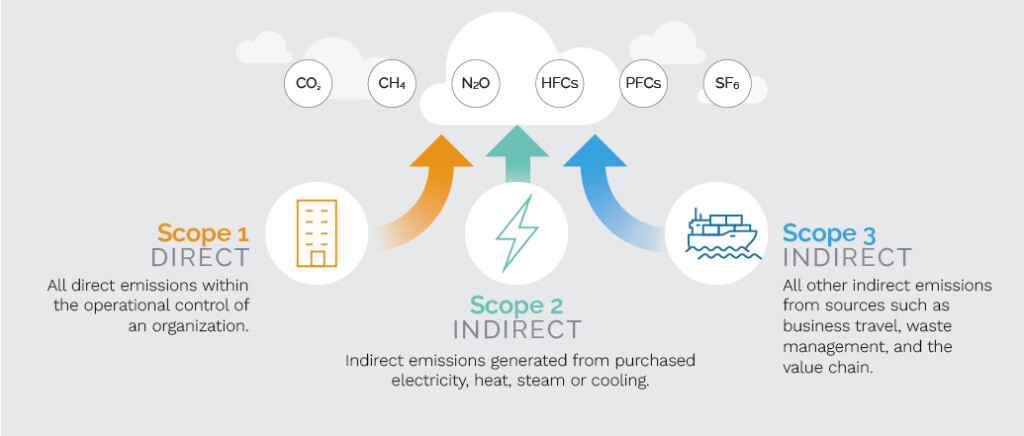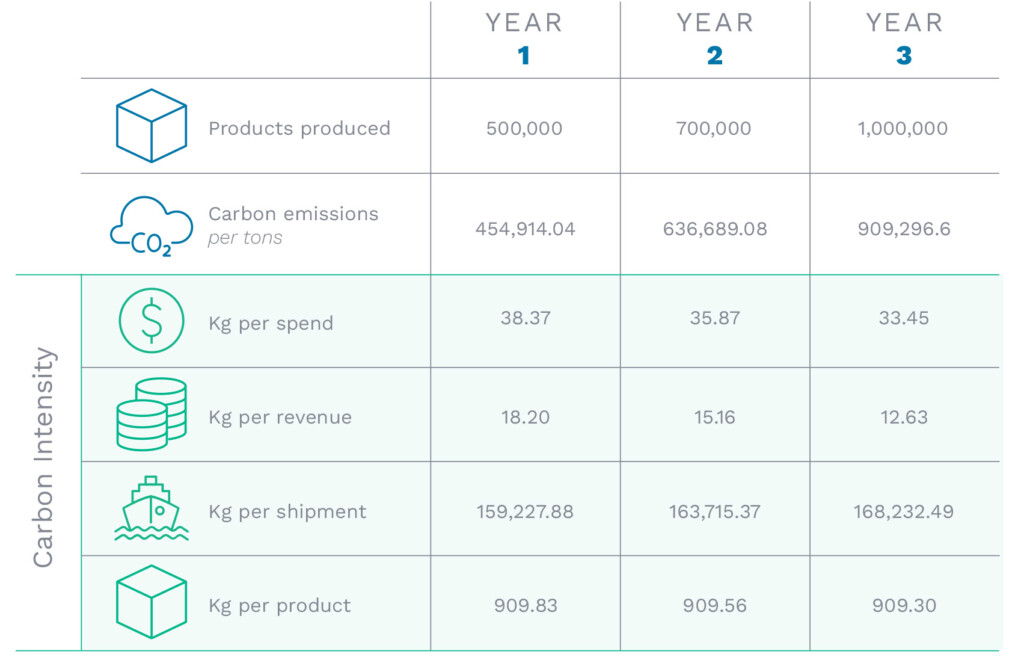Reducing carbon emissions within your supply chain isn’t just good for the environment, it’s good for business. And, whether your company is ready or not, regulations and environmental concerns from consumers will trigger net-zero target initiatives, providing more scrutiny for supply chain emissions, for both regulatory and environmental reasons.
With the U.S. government aiming to halve greenhouse gas emissions by 2030 and reach net-zero emissions by 2050, businesses are being strongly encouraged to adapt their current supply chain processes to be more environmentally friendly. Other governments have also set ambitious net-zero goals, including the United Kingdom and the European Union. But when taking carbon efficiency into consideration, companies may find that there are more benefits than just regulatory compliance.
Getting ahead of the regulatory requirements and putting an effective net-zero plan into place can pay off dividends to your company’s bottom line, sales, and reputation. Start looking at what you can change in your supply chain now to receive all of the benefits of green policies, ensure business continuity in the face of ongoing climate risks, and even gain first-mover advantages among your competitors.
Regulatory considerations
Ambitious net-zero goals will necessitate accurate reporting and penalties for noncompliance. And, at times, emissions within a company’s supply chain may be difficult to control or adjust. Scope 1 and Scope 2 emissions, for example, measure a company’s direct and indirect greenhouse gas emissions and are therefore changeable internally within a company’s supply chain processes. Scope 3 emissions, however, are measured throughout the entirety of a company’s supply chain, which any given company only has limited power over.

Figure 1: Only 10% of companies are currently tracking and reporting their Scope 1, 2, or 3 supply chain carbon emissions, creating a competitive opportunity.
Businesses have the opportunity now to make key changes internally and to put pressure on their suppliers, including transport vendors, before the serious enforcement of net-zero targets begins. At the moment, only 10% of companies are comprehensively tracking and reporting their Scope 1, 2, or 3 emissions, creating a competitive opportunity.
This process will likely include adjusting supply chains as necessary; for example, choosing a lower carbon-emitting form of transportation. If businesses don’t take the opportunity to find the best alternatives to carbon-emitting hot spots within their supply chains now, they’ll find it much harder once newer environmental regulations kick in.
Step up to the competition
To be competitive in tomorrow’s market, supply chain carbon emissions must be kept under control. Companies which fail to do so won’t just potentially face punitive fines; they will also find that their supply chains are difficult to adjust quickly and that consumers will move to other environmentally friendly brands.
An IBM/National Retail Foundation study recently found that the largest segment of customers (44%) are purpose-driven, meaning that they choose products according to how closely the brands align with their values. And, 11% of consumers will make purchase decisions based on carbon footprint data availability. Consumers are not only actively looking for proof of green credentials, but are actively using that information to inform their own purchasing practices.
Companies that wait too long to make these key changes will find themselves left behind in the competitive race, and may find themselves scrambling for lower-carbon options by the time they get around to it. Adjusting supply chains sooner rather than later will allow companies to find the solutions that work best for them, instead of implementing a last-ditch attempt to shore up their sustainability practices.
Keeping external stakeholders happy
External stakeholders are also looking for opportunities to invest in companies with sustainable practices. Public commitments to net-zero targets and to a reduction in carbon emissions are very beneficial to a company’s reputation. For example, PWC found that 72% of private equity firms inspect potential companies for ESG risks, a trend driven by value creation as opposed to risk management.
Realistically, to operate in today’s business world, it is no longer feasible to ignore climate issues and hope they go away. Shareholders, investors, and consumers alike are persistent in asking about a company’s green policies.
Tracking relevant carbon data for business success
Advanced data analytics means that companies can now better understand their carbon emission performance across their entire supply chain. This can aid in setting and hitting goals along their path to net-zero emissions.
However, not all data is created equal. While it’s worthwhile tracking Scope 3 emissions, especially for compliance reasons, companies should also start looking at monitoring their carbon intensity. Carbon intensity measures greenhouse gas output created per unit of each specific activity. So, a company could measure the carbon intensity of its transportation or manufacturing, giving them a fully accurate picture of where the greatest amount of emissions are coming from.

Figure 2: Managing carbon intensity instead of simply carbon emissions allows companies to grow while minimizing emissions growth.
Combining carbon data analytics with existing business needs will improve supply chains from both an environmental standpoint and a business perspective. For example, aiming to lower carbon emissions by using more economical modes like ocean and rail of transport will push a company to find the best solution for the environment and for their bottom line.
Finding and keeping top employees
Businesses may find that recruiting the new generation of workers will be easier with bona fide green action. A recent Deloitte study found that 42% of Gen Zs have changed or plan to change jobs due to climate concerns, and half of those surveyed were actively pushing their employers to adopt green policies. This will be an important factor when it comes to recruiting and retaining the top talent within a workforce.
The halo effect
As a result of increased consideration towards carbon emissions, supplier relationships will center more and more on green policies. Since businesses are responsible for the emissions of their entire supply chain, they will likely favor suppliers that have well-developed carbon reduction plans, or who offer lower carbon options.
Alignment on environmental values and issues can be beneficial to both sides of a supplier relationship, creating a so-called “halo effect.” Suppliers can publicize that they work with an environmentally friendly company, while your company can advertise their deliberate use of low-carbon alternatives.
Beginning to manage your supply chain carbon emissions will be a journey, as countries begin to ensure that they meet their ambitions net-zero goals. However, your carbon journey can give you significant business advantages, from straightforward regulatory compliance to increased efficiencies to employee and consumer retention. Either way, your company must make significant supply chains shifts, so make sure you’re starting now to capitalize on the benefits of these inevitable corporate environmental changes.
Learn about the business applications for measuring carbon intensity in our white paper
Heather Kosztowny is the Director of Data Science for Everstream Analytics, leading development and implementation of transportation modeling and optimization insights. Her 15 years of experience in data analytics and modeling have focused on logistics issues and carbon emissions evaluations and insights.